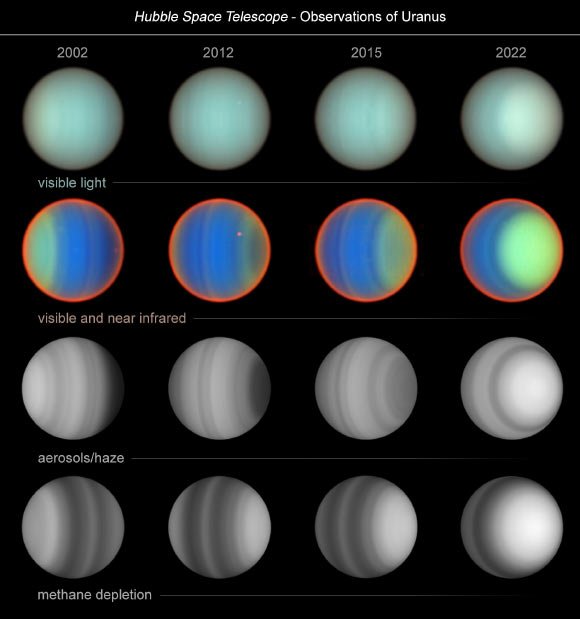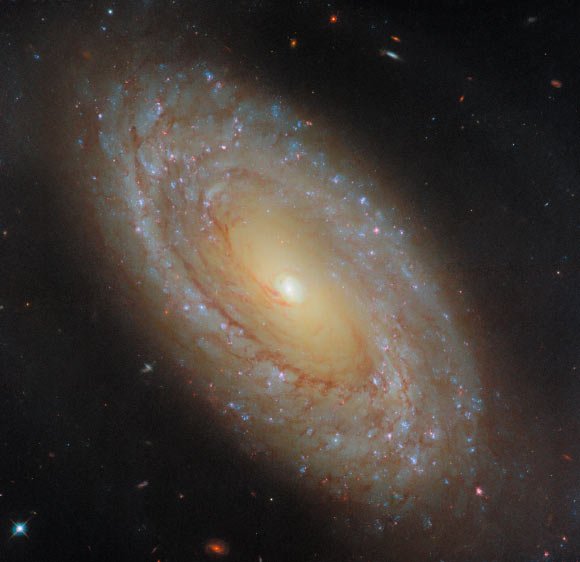An unexpected phenomenon called convection could help explain many of the volcanoes and other features of the Venusian landscape.

Artist’s impression of a volcano erupting on Venus. Image credit: ESA / AOES Medialab.
“Nobody had really considered the possibility of convection in the crust of Venus before,” said Washington University in St. Louis Professor Slava Solomatov.
“Our calculations suggest that convection is possible and perhaps likely. If true, it gives us new insight into the evolution of the planet.”
Convection occurs when heated material rises toward a planet’s surface and cooler materials sink, creating a constant conveyor belt of sorts.
On Earth, convection deep in the mantle provides the energy that drives plate tectonics.
Earth’s crust, about 40 km thick in continents and 6 km in ocean basins, is too thin and cool to support convection.
But Professor Solomatov and his colleague, Washington University in St. Louis’ Dr. Chhavi Jain, suspected the crust of Venus might have the right thickness (perhaps 30-90 km, depending on location), temperature and rock composition to keep that conveyor belt running.
To check that possibility, the researchers applied new fluid dynamic theories developed in their lab.
Their calculations suggested that Venus’ crust could, in fact, support convection — a whole new way to think about the geology of the planet’s surface.
In 2024, the scientists used a similar approach to determine that convection likely does not happen in the mantle of Mercury because that planet is too small and has cooled significantly since its formation 4.5 billion years ago.
Venus, on the other hand, is a hot planet both inside and out. Surface temperatures reach 465 degrees Celsius (870 degrees Fahrenheit), and its volcanoes and other surface features show clear signs of melting.
Scientists have long wondered how heat from the planet’s interior could be transferred to the surface.
“Convection in the crust could be a key missing mechanism,” Professor Solomatov said.
“Convection near the surface also could influence the type and placement of volcanoes on the Venusian surface.”
The authors hope future missions to Venus could provide even more detailed data on the density and temperature in the crust.
If convection is occurring as expected, some areas of the crust should be warmer and less dense than others, differences that would be detectable using high-resolution gravity measurements.
But perhaps an even more intriguing target is Pluto, the frozen dwarf planet at the outer reaches of the Solar System.
Images from NASA’s New Horizons mission revealed remarkable polygonal patterns on Pluto’s Sputnik Planitia region that resemble plate boundaries on Earth.
These polygons are formed by slow convection currents in a 4 km-thick layer of solid nitrogen ice.
“Pluto is probably only the second planetary body in the Solar System, other than Earth, where convection that drives tectonics is clearly visible on the surface,” Professor Solomatov said
“It’s a fascinating system that we still need to figure out.”
The results were published in the journal Physics of Earth and Planetary Interiors.
_____
Viatcheslav S. Solomatov & Chhavi Jain. 2025. On the possibility of convection in the Venusian crust. Physics of the Earth and Planetary Interiors 361: 107332; doi: 10.1016/j.pepi.2025.107332










